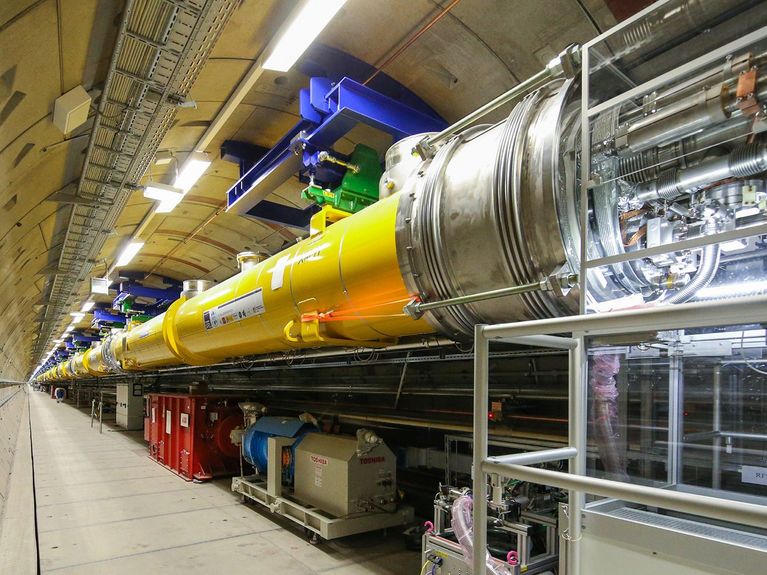
Story #06
Using Particle Accelerators as Generators
Anyone who wants to look inside solid matter needs ultra-bright light – like that produced by particle accelerators. Some of the world’s best accelerator facilities are operated at Helmholtz Centers. And they’re already working on technologies to further boost these generators’ performance.
Particle accelerators can be used as extremely powerful light sources: they bring electron packets to high energy level before transporting the particles through specially designed magnetic structures. These “undulators” put the electrons on a slalom course, which causes them to emit high-intensity flashes of light. These flashes allow a broad range of materials to be analyzed in stunning detail – e.g. biomolecules for health research, but also quantum materials for power production or the computers of tomorrow, not to mention nanoparticles, which can serve as catalysts for green chemistry or new energy sources. As such, high-performance light sources are paving the way for a range of innovative technologies and solutions.
Helmholtz research centers operate several of these accelerator-based, complementary light sources: at the Helmholtz-Zentrum Dresden-Rossendorf (HZDR), the radiation source ELBE emits intense Terahertz waves. In turn, the BESSY II ring at Helmholtz-Zentrum Berlin (HZB) produces focused bursts of soft X-ray light, which is particularly well-suited to research on energy-relevant materials for e.g. batteries or catalysts. And Hamburg is home to no less than three of these “generators”: at the Deutsches Elektronen-Synchrotron DESY, the PETRA III ring puts out focused pulses of hard X-ray light. And the free-electron laser FLASH produces ultra-short flashes in the extreme UV range.
Moreover, DESY plays a key part at European XFEL: the 3.4-kilometer-long facilities, which are based around a superconducting linear accelerator, generate the most powerful X-ray bursts on the planet. The free-electron laser’s X-ray bursts are only a few femtoseconds long – i.e., extremely short-lived. This makes them ideal candidates for observing ultra-fast processes: the X-ray laser can e.g. essentially “record” chemical reactions in real-time, trace activity within high-temperature superconductors, and help decipher the states of matter to be found in the cores of planets and stars.
European XFEL im Überblick (Englische Version) / European XFEL in a nutshell (English version)
All these facilities are among the best in the world, as can also be seen from the high number of research teams that use them on a regular basis. Their further development is expedited by the Helmholtz program “Accelerator Research and Development” (ARD): here, multiple centers pool their resources to work on innovative technologies like laser-plasma acceleration, e.g. to develop more compact light sources. And with the “Helmholtz Photon Science Roadmap,” the Association pursues a strategy to secure its leading global position in light sources in the future: for example, a few years from now, BESSY III and PETRA IV are expected to generate flashes of X-ray light that are substantially more intense, allowing us to assess materials far more precisely than is currently possible.
Picture: DESY/Dirk Nölle